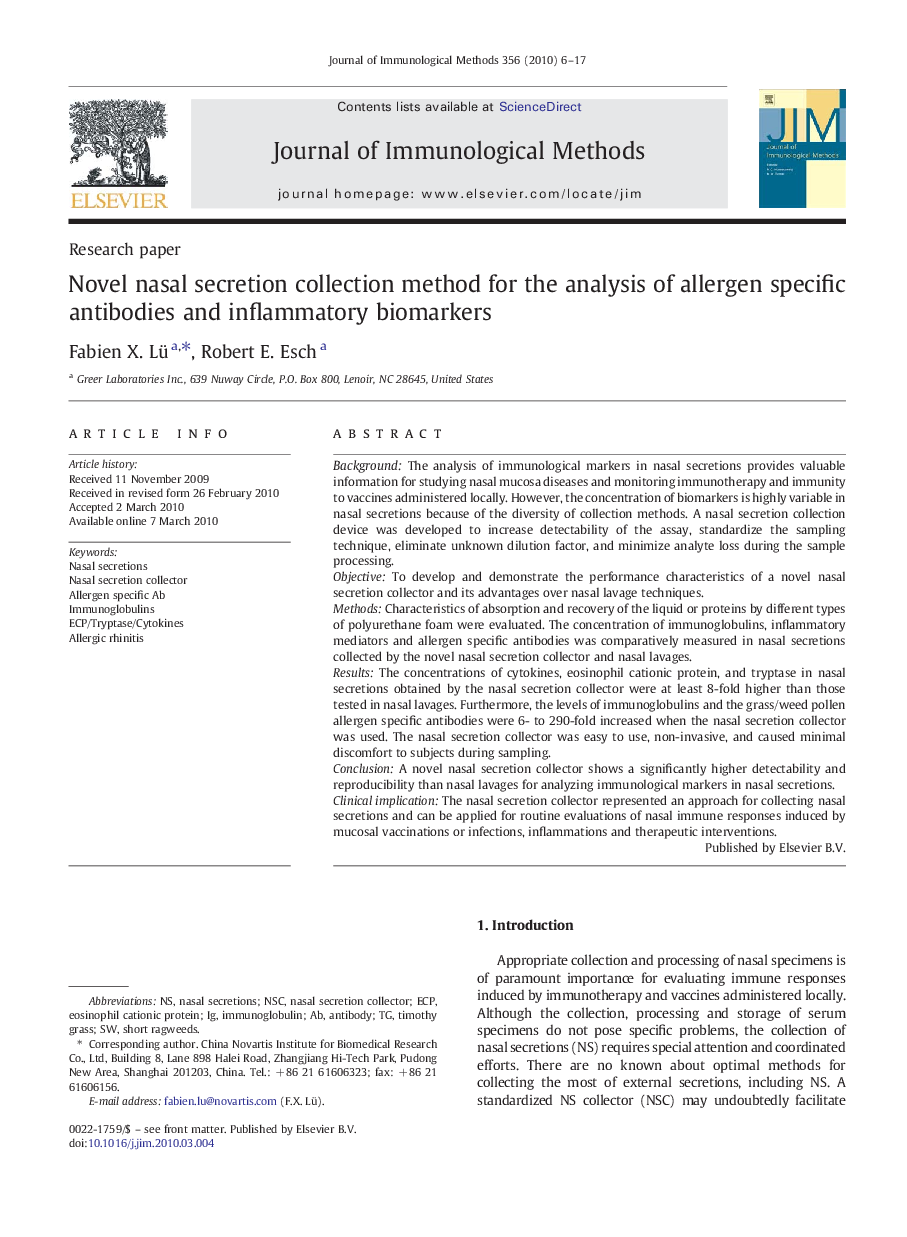| Article ID | Journal | Published Year | Pages | File Type |
|---|---|---|---|---|
| 2088767 | Journal of Immunological Methods | 2010 | 12 Pages |
BackgroundThe analysis of immunological markers in nasal secretions provides valuable information for studying nasal mucosa diseases and monitoring immunotherapy and immunity to vaccines administered locally. However, the concentration of biomarkers is highly variable in nasal secretions because of the diversity of collection methods. A nasal secretion collection device was developed to increase detectability of the assay, standardize the sampling technique, eliminate unknown dilution factor, and minimize analyte loss during the sample processing.ObjectiveTo develop and demonstrate the performance characteristics of a novel nasal secretion collector and its advantages over nasal lavage techniques.MethodsCharacteristics of absorption and recovery of the liquid or proteins by different types of polyurethane foam were evaluated. The concentration of immunoglobulins, inflammatory mediators and allergen specific antibodies was comparatively measured in nasal secretions collected by the novel nasal secretion collector and nasal lavages.ResultsThe concentrations of cytokines, eosinophil cationic protein, and tryptase in nasal secretions obtained by the nasal secretion collector were at least 8-fold higher than those tested in nasal lavages. Furthermore, the levels of immunoglobulins and the grass/weed pollen allergen specific antibodies were 6- to 290-fold increased when the nasal secretion collector was used. The nasal secretion collector was easy to use, non-invasive, and caused minimal discomfort to subjects during sampling.ConclusionA novel nasal secretion collector shows a significantly higher detectability and reproducibility than nasal lavages for analyzing immunological markers in nasal secretions.Clinical implicationThe nasal secretion collector represented an approach for collecting nasal secretions and can be applied for routine evaluations of nasal immune responses induced by mucosal vaccinations or infections, inflammations and therapeutic interventions.
